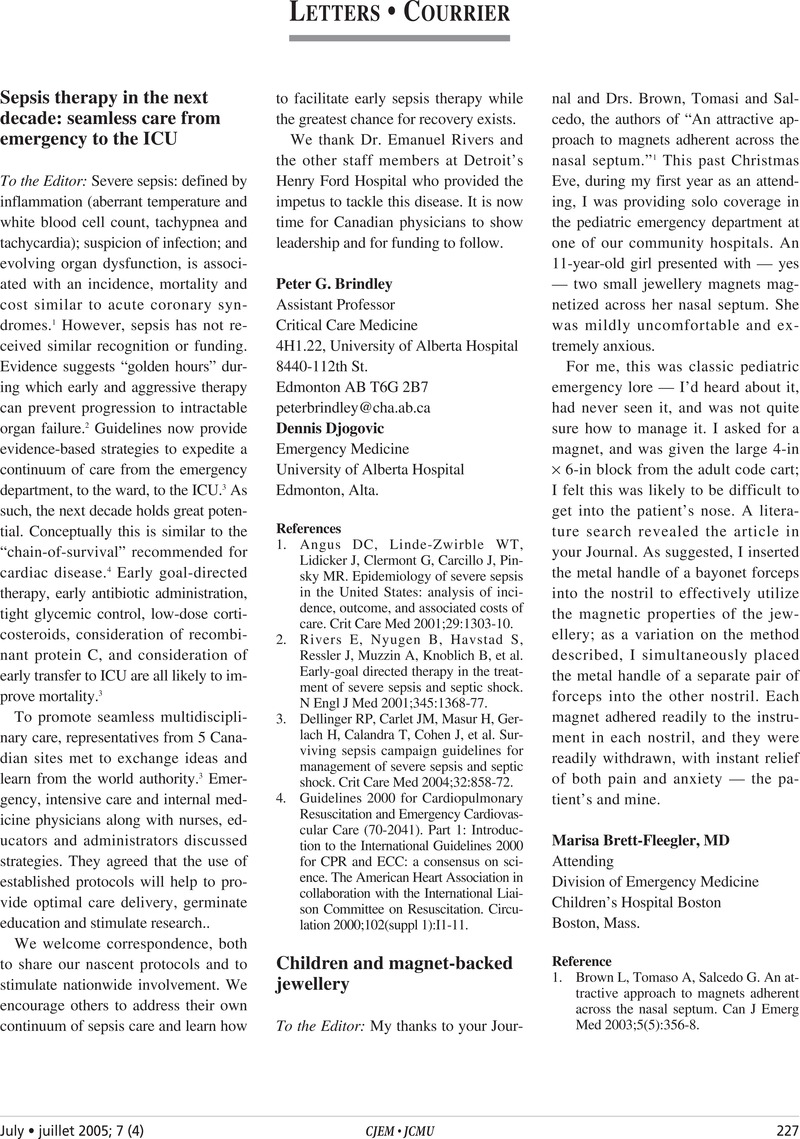No CrossRef data available.
Article contents
Sepsis therapy in the next decade: seamless care from emergency to the ICU
Published online by Cambridge University Press: 21 May 2015
Abstract
An abstract is not available for this content so a preview has been provided. As you have access to this content, a full PDF is available via the ‘Save PDF’ action button.

- Type
- Letters • Courrier
- Information
- Copyright
- Copyright © Canadian Association of Emergency Physicians 2005
References
1.Angus, DC, Linde-Zwirble, WT, Lidicker, J, Clermont, G, Carcillo, J, Pinsky, MR. Epidemiology of severe sepsis in the United States: analysis of incidence, outcome, and associated costs of care. Crit Care Med 2001;29:1303–10.CrossRefGoogle ScholarPubMed
2.Rivers, E, Nyugen, B, Havstad, S, Ressler, J, Muzzin, A, Knoblich, B, et al.Early-goal directed therapy in the treatment of severe sepsis and septic shock. N Engl J Med 2001;345:1368–77.Google Scholar
3.Dellinger, RP, Carlet, JM, Masur, H, Gerlach, H, Calandra, T, Cohen, J, et al.Surviving sepsis campaign guidelines for management of severe sepsis and septic shock. Crit Care Med 2004;32:858–72.CrossRefGoogle ScholarPubMed
4.Guidelines 2000 for Cardiopulmonary Resuscitation and Emergency Cardiovascular Care (70–2041). Part 1: Introduction to the International Guidelines 2000 for CPR and ECC: a consensus on science. The American Heart Association in collaboration with the International Liaison Committee on Resuscitation. Circulation 2000;102(suppl 1):I1-11.Google Scholar


